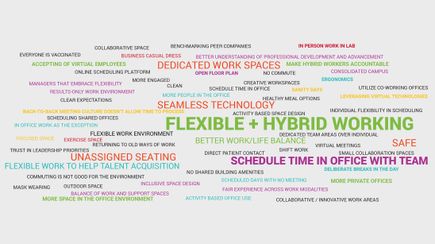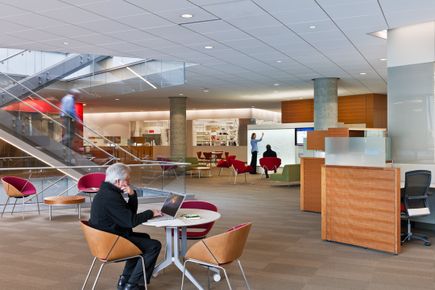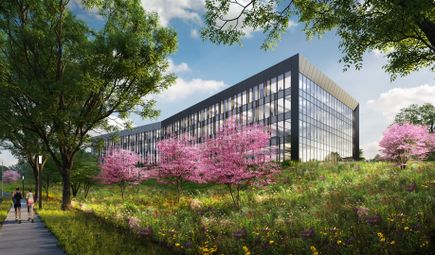Effects of Covid-19 on the Workplace
Share
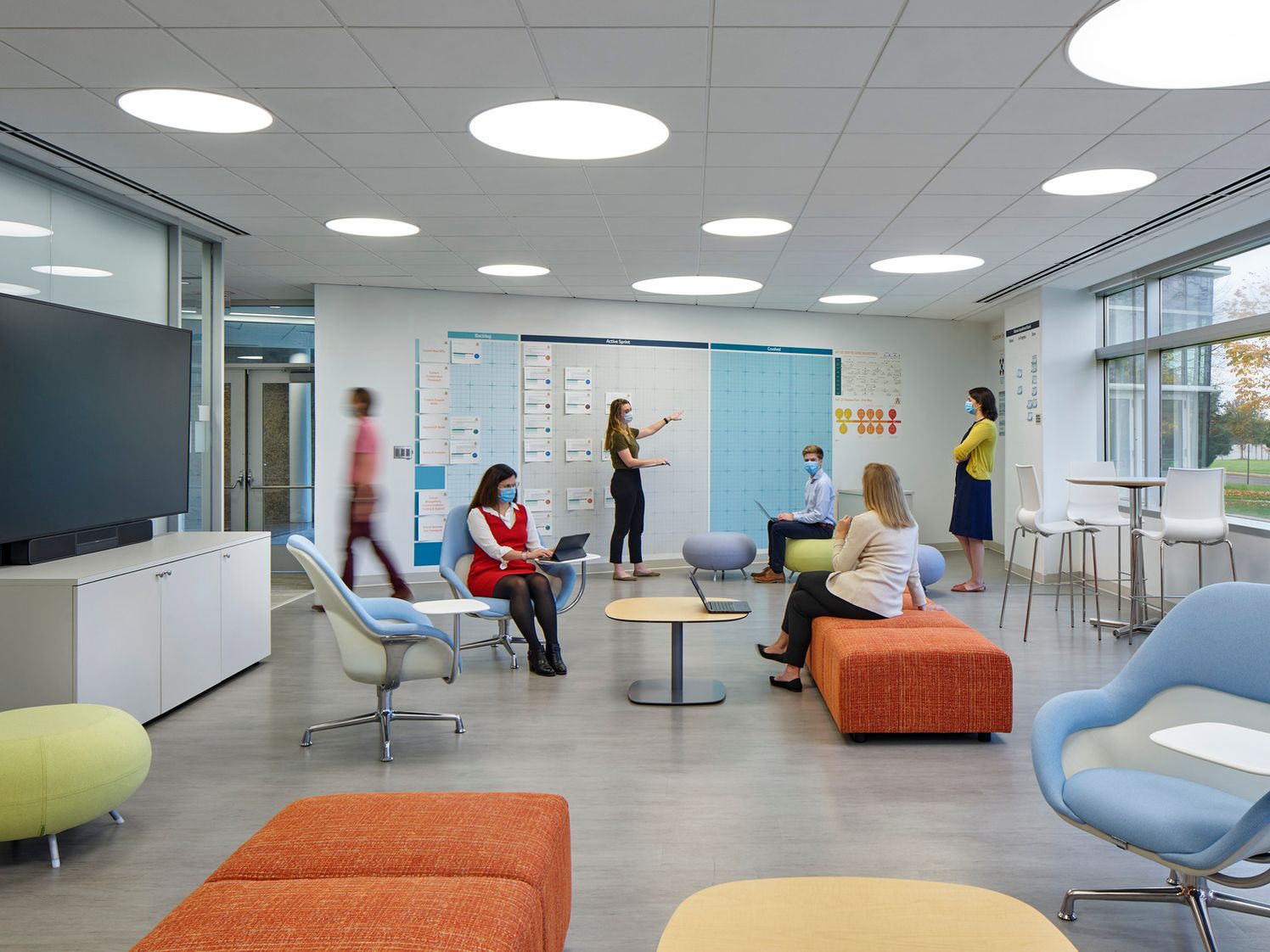
Work Design Magazine published an article by Associate Principal Katherine Ahrens, LEED AP. The piece, titled “The Effects of Covid-19 on the Workplace: Reinforcing Culture, Creating an Amenity,” is part of the publication’s “Expert Insights” column.
Creating a clear organizational culture will lead to the best possible built space as we return to work post-COVID-19.
As we begin to think about the future of the workplace, the question persists from knowledge workers, “why should we go back to the office given that remote work has proven to be successful?” Helping to define and express how the workplace provides value, and how companies and individuals ensure that coming into the office is purposeful, will be essential goals of future workplace strategies.
Culture is essential to an engaged workforce
Creating a clear definition of company culture continues to prevail as a key element to an engaged workforce. While many software tools are available to bring together a distributed workforce, our research shows that spontaneous and ad hoc interactions help employees grow and learn. Especially for less experienced professionals, on-the-job learning is intangible and leads to high preforming employees. These informal interactions develop a strong work ethic and help them absorb cultural cues about organizational behavior. Building a virtual culture, or more importantly, balancing a virtual and in-person culture, is a critical aspect of asynchronous working. Socialization and mentorship are important factors as we continue in a socially distanced paradigm of work that will need to be supported through the workspace.
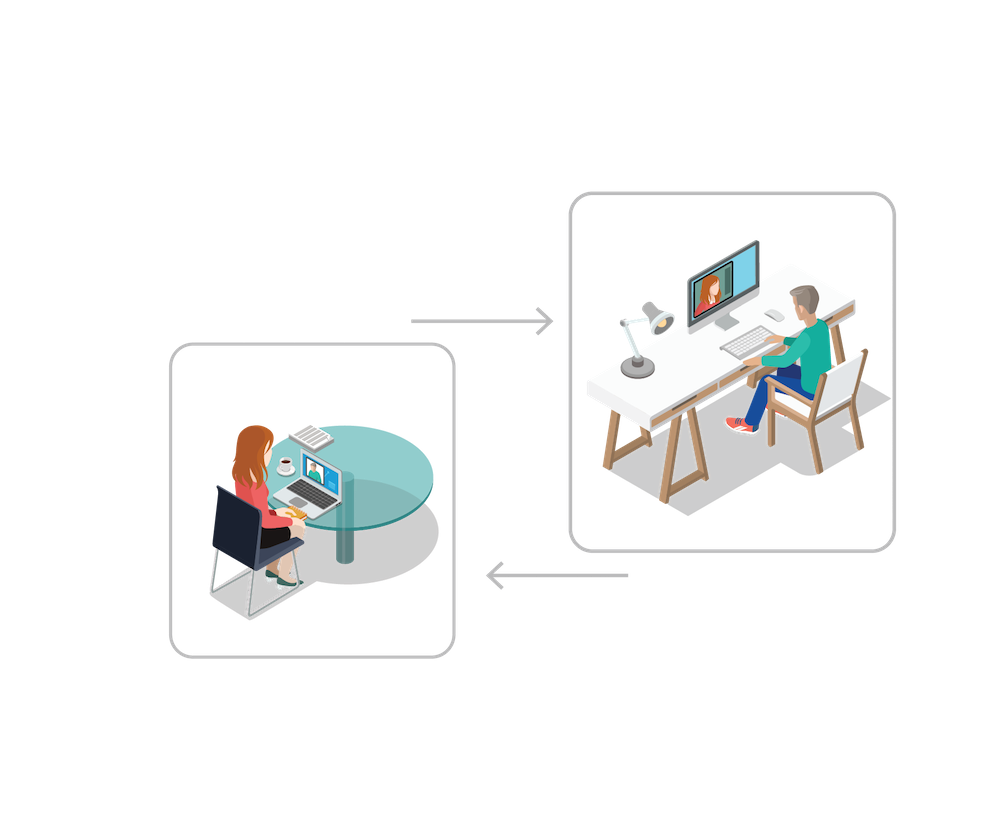
Freelancers are indicators of changing attitudes toward loyalty
Even before COVID-19, contractor culture and the gig economy were growing. As more coworking spaces have sprung up throughout the country, individual workers have started to think about the value of their own time, and their long-term engagement with companies. Freelancing goes hand-in-hand with remote work, and will continue to blossom as new ways of working emerge and are enabled. Every CFO knows that the most expensive and important asset of a company is payroll. As employee allegiance changes nationwide, it is more important than ever to compel top employees to be invested and engaged in their work and organizational culture, even if it is in a more distributed model.

Think of workspace as an amenity to attract workers, retain staff and improve culture
One way to build loyalty and culture is to think of a company’s physical space as an amenity. Amenities are often thought of as constructs that keep people in the office. In years previous, many companies built in snacks, foosball tables and other services to help keep people in the office beyond the typical 9-5. Moving forward, it will be important for “amenities” to be more work-focused, supportive of the reasons that individuals are coming into the physical workspace, and coordinated with their work-life balance. There is no longer the need to keep people “present” in the office, but while they are there, they should be highly productive.
Space will also need to build community, identity and social connections that are hard to achieve remotely. Offices can offer benefits that cannot be achieved in remote work settings, and thus encourage workers to come in. In addition to face time with mentors, spontaneous interactions and socialization, offices can offer quiet spaces for focused work, access to technology or even just a change in pace that many crave when distributed work becomes mundane.
The built environment is important to establishing culture, and can be harnessed to enhance productivity and loyalty. Exploring how the workforce views their workplace and what they would like to see improved is an important first step in developing a workplace strategy. That foundation enables companies to curate a future-looking workspace. That could mean providing possibly less, but higher quality space to help differentiate environments. Creating a physical workspace that employees want to come to and supports their work processes that cannot be done remotely (or at least not as efficiently) will require thoughtful strategies.

Old models for planning space are no longer reliable, new models will emerge
We often approach space planning challenges by utilizing standard ratios of space types, developed over years of research, coupled with our understanding of the patterns knowledge workers engage in over the course of the work day. As that typical work day becomes even more diverse, ratios will change, become more varied and less reliable. Planning strategies will cater towards more individualistic approaches and asynchronous schedules. Reliable and consistent analysis of badge and occupancy data will be hard to come by for the near future, but it will become an important tool to understand the distributed workforce. Defining and building space that has been well researched and validated through a workplace research and strategy process will help create highly utilized environments that supports company culture.
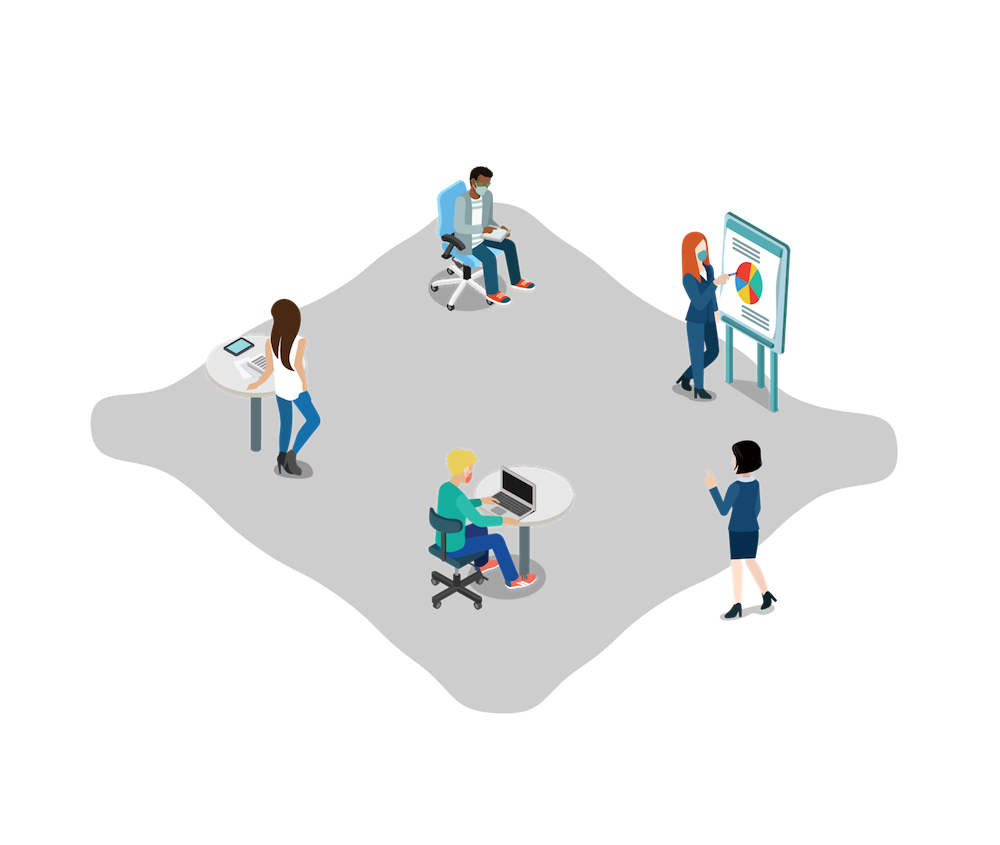
Examples of shifting planning metrics
- Shifting ratios will inevitably affect how we plan workspaces and allocate real estate. Basic metrics that we have grown accustomed to, will shift to focus on communal aspects of working in the office. There may be less individual workspace, and more shared work areas. This seems counter-intuitive given the pandemic response’s emphasis on reducing surface contact inherent in shared workspaces, but in the long run, this balance will help support creating the office as an amenity or destination, rather than a place where attendance is the key benchmark.
- Depending on what people’s home life looks like, there will still be a need for focused work space. Ratios of open to enclosed collaboration and an emphasis on air flow and acoustics will be important to success.
- Understanding what activities are happening during meetings in conference rooms will define the future space need. For example, the traditional conference room with a large meeting table that everyone can sit around may not remain as the predominant space type outside of the individual work seat. Flexible meeting furnishings that allow for different configurations, and a focus on high and low tech tools that facilitate different types of collaboration will become more important. New space types that best support collaboration, physically and virtually, will look different.
Our ability to create clear organizational cultures and to research and strategize around asynchronous and distributed work models will lead to the best possible built space, and prove to be differentiators of successful workplace design.
